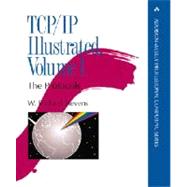TCP/IP Illustrated, Volume 1: The Protocols

TCP/IP Illustrated, Volume 1: The Protocols
- ISBN 13:
9780201633467
- ISBN 10:
0201633469
- Format: Hardcover
- Copyright: 01/01/1994
- Publisher: Addison-Wesley Professional
- Newer Edition
Rent
Sorry, this item is currently unavailable.



